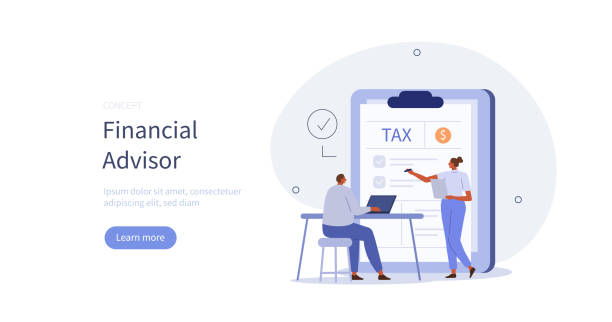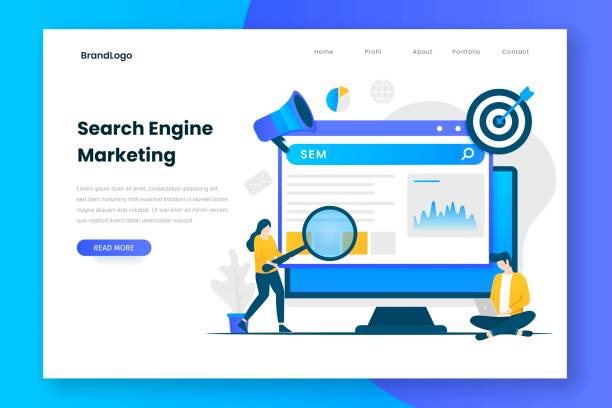An Introduction to the Importance of User-Friendly Website Design

In today’s digital world, merely having a website is not enough; what matters is how users interact with that website.
#User-Friendly_Website_Design goes beyond visual aesthetics and encompasses all aspects that convert a visitor into a loyal user.
This approach means building a website where users can easily find the information they need, use services, and have a positive experience.
A well-designed website not only increases #Conversion_Rate but also leads to #User_Satisfaction and ultimately #Customer_Loyalty.
This section, in an explanatory and educational manner, explores the fundamental importance and various dimensions of user-friendly website design and demonstrates how this concept is the cornerstone of a successful online presence.
Attention to User Experience (UX) and User Interface (UI) are considered key pillars in this journey, which must be taken into account at every stage of design to ensure the final website meets the audience’s needs and expectations.
A website that is difficult to use will quickly lose visitors, even if it has valuable content.
Therefore, investing in user-centric website design is a strategic decision.
Are you dissatisfied with the low conversion rate of visitors to customers on your e-commerce site?
Solve this problem permanently with professional e-commerce website design by Rasaweb!
✅ Increase visitor-to-customer conversion rate
✅ Create an excellent user experience and build customer trust
⚡ Get free consultation
Key Principles of User Experience in Website Design
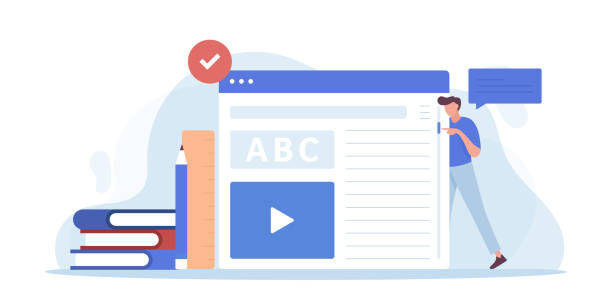
To achieve a user-friendly website design, it is essential to be familiar with the fundamental principles of User Experience (UX).
These principles guide designers in creating websites that are not only visually appealing but also highly functional.
Three vital principles include Usability, Accessibility, and Aesthetics.
Usability means that the website should be easy to navigate and users should be able to perform their tasks without confusion.
This includes clear menus, simple forms, and logical navigation.
Accessibility also means designing the website in such a way that people with various abilities, including those with disabilities, can easily use it; this includes aspects such as alt text for images, screen reader support, and appropriate color contrast.
Aesthetics, while initially seeming subjective, plays a significant role in attracting and retaining users.
A visually pleasing website design builds user trust and conveys a sense of professionalism.
This section provides guidance and education, elaborating on these principles and offering examples of how to apply them in website design to help designers create a user-friendly and effective website design that meets both business needs and provides an enjoyable experience for users.
The Role of User Research and Analysis in Successful Design
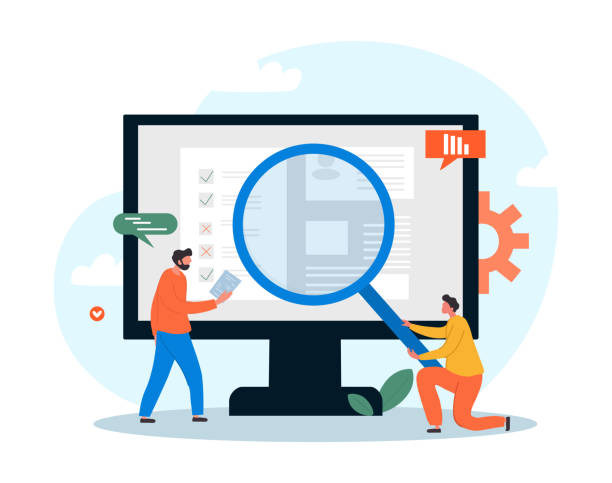
No user-friendly website design will be complete without a deep understanding of target users.
User research and analysis are fundamental steps in this process, helping designers identify their audience’s needs, behaviors, and expectations.
This analytical and specialized approach ensures that design decisions are based on real data and user-centric insights, not just guesswork.
Numerous methods exist for user research, each providing valuable information.
Interviews and surveys can offer qualitative insights into user motivations and needs.
Usability Testing allows designers to observe how users interact with the website and identify weaknesses or confusion.
Personas and user scenarios are also powerful tools for visualizing users and their journeys on the website.
Website data analysis (such as Google Analytics) provides quantitative information about user behavior, like pages visited, time spent, and exit paths.
By combining these methods, a comprehensive picture of the ideal user and their challenges can be obtained, providing a solid foundation for a user-centric website design.
This data allows the design team to optimize the website’s features, content, and structure to provide the best possible experience for the audience.
This focus on data ensures the long-term success of the website and prevents wasted resources on ineffective designs.
| Research Method | Description | Primary Application |
|---|---|---|
| User Interviews | Direct conversation with users to understand needs and challenges. | Gaining deep qualitative insights, understanding motivations. |
| Online Surveys | Collecting data from a large number of users via questionnaires. | Identifying patterns and preferences on a large scale. |
| Usability Testing | Observing users interacting with the website to identify problems. | Discovering obstacles and improving user flow. |
| Competitor Analysis | Reviewing competitor websites to identify strengths and weaknesses. | Identifying best practices and differentiation opportunities. |
| Web Data Analysis | Analyzing quantitative data from tools like Google Analytics. | Understanding actual user behavior and identifying weak points. |
The Importance of Navigation and Information Architecture in User-Friendly Website Design

Another critical component in user-friendly website design is its Navigation and Information Architecture.
These two elements determine how easily users can move through the website and find the information they need.
Poor information architecture can quickly frustrate users and lead to them abandoning the website, even if its content is very valuable.
Navigation design should be intuitive and logical, meaning users should instinctively know where to click and what to expect from each section.
This includes using clear menus, meaningful labels, and navigation paths (Breadcrumbs).
Information architecture also refers to organizing and labeling content in a logical and understandable way.
Strong information architecture helps users quickly reach their goals and feel in control of their experience.
This section, in a specialized and guiding manner, examines best practices for designing navigation and information architecture.
Important methods include Card Sorting and Tree Testing, which help designers create content structures that align with users’ mental expectations.
This precision in organization not only improves the user experience but also aids in website SEO, as search engines prefer logically structured websites.
Ultimately, strong navigation and information architecture are key components for achieving a user-friendly and effective website design.
Research shows that 80% of customers trust companies with professional websites more. Does your current site inspire this trust?
With Rasaweb’s corporate website design services, solve the problem of lack of customer trust and a weak online image forever!
✅ Create a professional image and increase customer trust
✅ Generate more sales leads and grow your business
⚡ Get free consultation
User Interface (UI) and Visual Design in User Attraction

Alongside structure and navigation, User Interface (UI) and visual design play a vital role in attracting and retaining users.
UI, which relates to the appearance and interactive aspects of the website, must not only be beautiful but also highly functional.
A user-friendly website design means careful attention to details such as layout, color palette, typography, and the use of images and icons.
Color selection should be intelligent and align with the brand and color psychology.
Appropriate typography enhances content readability and improves the website’s visual impact.
The use of Whitespace is important for reducing clutter and increasing visual clarity.
Images and videos must be high-quality and relevant to the content to enhance visual appeal and convey the message more effectively.
This section, in an explanatory and specialized manner, examines various UI elements and visual design and demonstrates how to create a pleasant and efficient visual experience by cleverly combining these elements.
This goes beyond mere aesthetics; a good UI can facilitate user interaction with the website, lead to a reduction in Bounce Rate, and encourage users to explore the site further.
When users feel comfortable and visually satisfied, they are more likely to stay on the site longer and achieve their goals.
Therefore, user-friendly website design requires harmony between aesthetics and functionality.
Responsiveness (Responsive Design) and Mobile Experience

In the current era where smartphones and tablets have become primary tools for internet access, website responsiveness (Responsive Design) is an indispensable necessity for user-friendly website design.
Responsive design means that the website can automatically adjust its layout and content to the size of the user’s device screen.
This ensures that users, regardless of the device they use (desktop computer, laptop, tablet, or smartphone), have an optimal user experience.
Ignoring responsive design can lead to losing a large portion of the audience, as a website that does not display correctly on mobile will be quickly closed by users.
This section, in a news-like and educational manner, also refers to the importance of the “Mobile-First” approach, where design is first done for mobile devices and then extended to larger screens.
This approach helps designers focus on essential elements and core functionality and then add details for larger screens.
Also, optimizing mobile loading speed, optimizing images, and using readable fonts in small sizes are among the items that should be considered to provide a website design with an excellent mobile experience.
Google also ranks responsive websites that provide a good mobile experience higher in its mobile search results, which is another reason for the importance of this feature in SEO and accessibility.
User-friendly website design will be incomplete without considering various devices.
Increasing Engagement and User Experience (UX) with Interactive Elements

To go beyond a merely informational website and achieve a user-friendly and engaging website design, the use of Interactive Elements is vital.
These elements allow users to actively engage with the website, rather than merely being passive consumers of content.
Buttons and contact and subscription forms are basic examples of interaction, but more complex elements can also be used to improve the user experience.
Subtle animations, Hover Effects, and visual feedback upon clicking or scrolling can make the website feel more alive and attractive.
Progress Bars in multi-step forms, filters and sorting on product pages, and online chat functionalities all help users have more control over their experience and easily reach their goals.
This section, in a guiding and entertaining manner, explores various interactive elements and how to use them effectively to increase user participation.
Also, the importance of immediate user feedback (such as success or error messages) and the use of visual elements to guide users through complex processes are emphasized.
The ultimate goal is to build a website that not only provides information but also offers a rich and enjoyable experience for visitors.
This attention to interactive details is a distinctive feature of a user-friendly website design that can make a significant difference in conversion rates and customer satisfaction.
| Interactive Element | Description | Impact on UX |
|---|---|---|
| Micro-animations | Small, subtle movements in the user interface (e.g., liking). | Increased visual appeal, immediate feedback. |
| Filters and Sorting | Tools for refining or organizing content (e.g., products). | Increased information findability, improved user control. |
| Step-by-step Forms | Breaking down long forms into small, manageable sections. | Reduced cognitive load, increased form completion rates. |
| Feedback Systems | Such as ratings, comments, or like/dislike buttons. | Creating a sense of participation, collecting data for improvement. |
| Advanced Search Bars | Including auto-suggestions, voice search. | Facilitating access to information, reducing search time. |
Website Performance Optimization and Load Speed
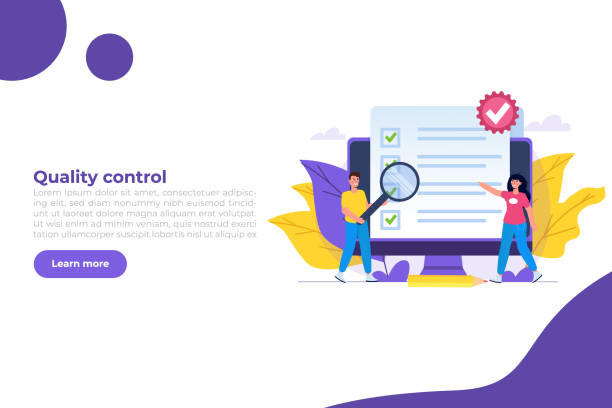
One of the critical factors that directly affects user-friendly website design is website loading speed.
Today’s users are impatient and quickly leave slow websites.
Even a few seconds of loading delay can lead to an increase in bounce rate, reduced user satisfaction, and ultimately, loss of customers.
Performance optimization means not only reducing loading time but also providing a smooth and uninterrupted experience for the user.
This section, in a specialized and analytical manner, examines various methods for increasing website speed.
Image compression, using Browser Caching, code optimization (CSS, JavaScript, HTML), and choosing a reliable and fast hosting provider are among the key actions.
Also, using Content Delivery Networks (CDNs) can improve content loading speed for users in different geographical locations.
Continuous monitoring of website performance using tools like Google PageSpeed Insights and GTmetrix is essential for identifying weaknesses and performing necessary optimizations.
In addition to its direct impact on user experience, website loading speed is also an important factor in search engine rankings.
Search engines prefer fast websites and rank them higher in search results.
Therefore, investing in performance optimization not only benefits users but also significantly contributes to SEO success and business growth.
A user-friendly website design without optimal speed will be ineffective.
Is your e-commerce site ready to attract maximum customers and increase sales? Rasaweb transforms your online business with modern and efficient e-commerce website designs.
✅ Increased speed and improved SEO
✅ Excellent user experience on mobile and desktop⚡ Get a free e-commerce website design consultation from Rasaweb!
Accessibility and Inclusion in Website Design
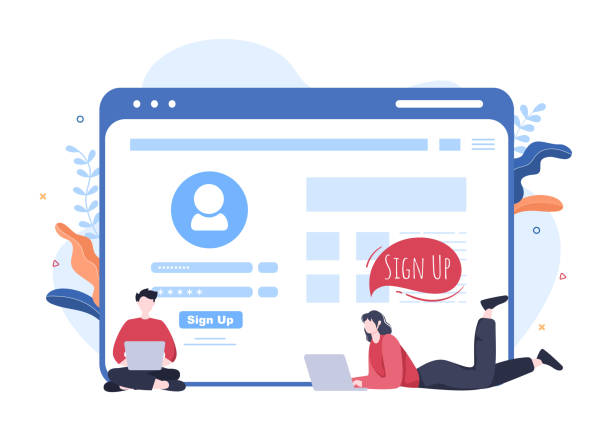
The concept of Accessibility is one of the main pillars of user-friendly website design that is often overlooked.
Accessibility means designing a website so that people with different abilities and limitations, including those with disabilities, can use it fully and comfortably.
This is an ethical responsibility and, in many countries, a legal requirement.
Ignoring accessibility means excluding a significant portion of society from online information and services.
This section, in an explanatory and educational manner, addresses the importance and how to implement accessibility in websites.
Using alternative text (Alt Text) for images (for screen reader users), maintaining appropriate color contrast (for people with visual impairments), providing captions for videos, and keyboard navigation capability (for people who cannot use a mouse) are among the actions that should be considered.
Also, semantic coding (Semantic HTML) and adherence to WCAG (Web Content Accessibility Guidelines) standards can help improve website accessibility.
A highly accessible website not only covers a wider range of audiences but also helps improve SEO, as many accessibility methods overlap with SEO principles.
Ultimately, a truly user-friendly website design is one that is usable by everyone, regardless of their abilities or limitations.
This approach is not only ethical but also necessary for expanding access to online information and services and contributes to a more inclusive digital society.
The Future of User-Friendly Website Design and Continuous Improvement

The world of user-friendly website design is constantly evolving, and a continuous improvement approach is essential to maintain an effective and competitive website.
This section, in a news-like and thought-provoking manner, addresses future trends in user experience and the importance of staying up-to-date.
Artificial intelligence and machine learning will play an increasing role in personalizing the user experience, providing smart suggestions, and advanced chatbots.
Virtual and augmented reality also have great potential for creating more interactive and immersive experiences.
Voice as a User Interface (Voice UI) is also growing, and websites need to be optimized for voice search and voice-based interactions.
However, more important than blindly following trends is understanding the fundamental needs of users and adapting to them.
A/B testing, monitoring user feedback, and continuous analysis of website performance data are crucial tools for identifying weaknesses and opportunities for improvement.
Is our website agile enough to keep pace with these changes? Are we constantly listening to our users? These are questions every designer and business owner should ask themselves.
User-friendly website design is not a one-time process, but a continuous journey of optimization and adaptation to changing user expectations.
By focusing on this analytical and iterative approach, we can ensure that the website remains relevant and effective in the long run and always provides the best possible experience for its visitors.
This commitment to continuous improvement guarantees success in today’s competitive online space.
Frequently Asked Questions
And other services of Rasaweb Advertising Agency in the field of advertising
Smart Social Media: A novel service for increasing user engagement through SEO-driven content strategy.
Smart Advertorials: A novel service for increasing sales through custom programming.
Smart Digital Branding: Professional optimization for increasing click-through rates using user experience customization.
Smart Data Analysis: A professional solution for digital branding focusing on intelligent data analysis.
Smart Brand Identity: A creative platform for improving website traffic with attractive user interface design.
And over a hundred other services in the field of internet advertising, advertising consultation, and organizational solutions
Internet Advertising | Advertising Strategy | Advertorials
References
- The Importance of User Experience in Website Design
- Factors Affecting Website Design Success
- The Importance of UI and UX in Website Design
- The Importance of User Experience in Web Design
? Rasaweb Digital Marketing Agency, your companion and guide in the challenging world of digital. We elevate your business to new heights and establish a powerful online presence for you by providing services such as website design with modern user interfaces, professional SEO, and specialized content creation.
📍 Tehran, Mirdamad Street, next to Bank Markazi, Kazerun Jonubi Alley, Ramin Alley, No. 6

